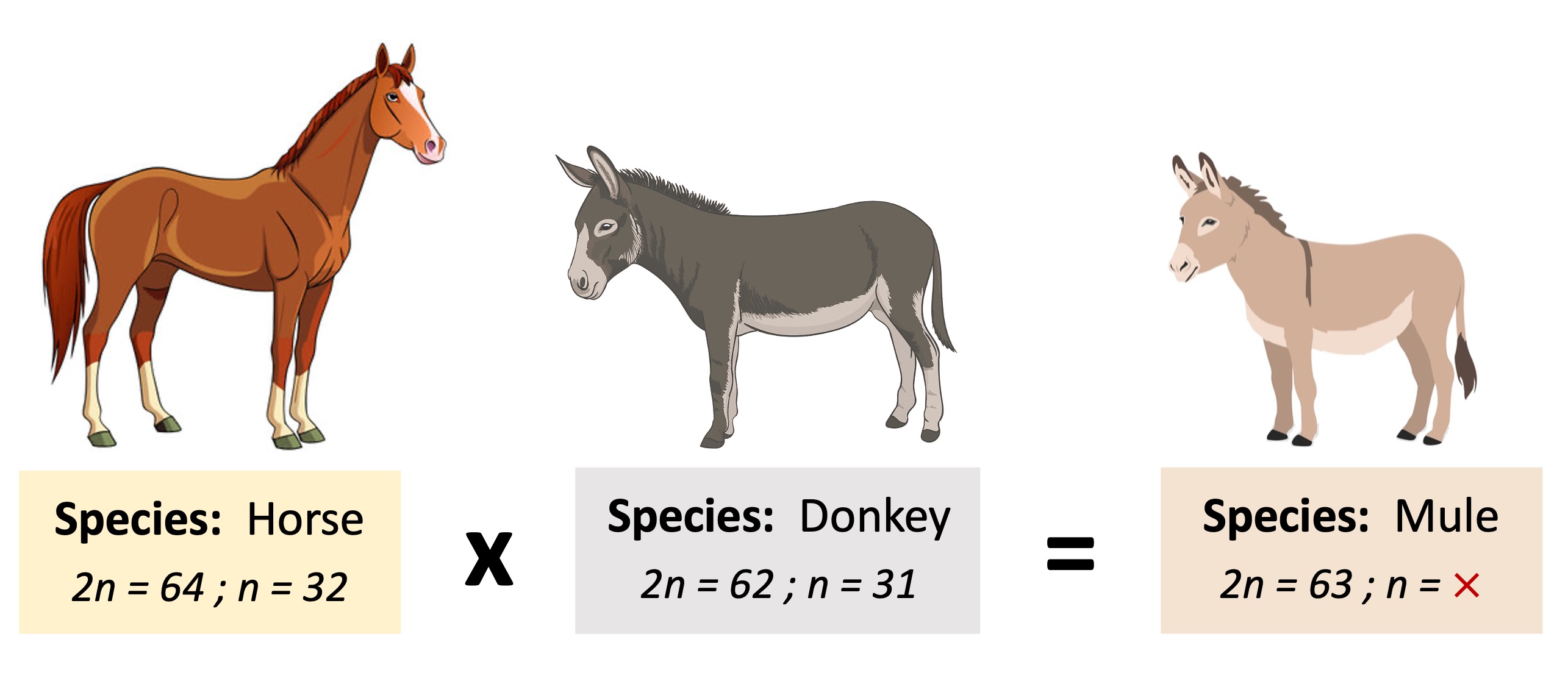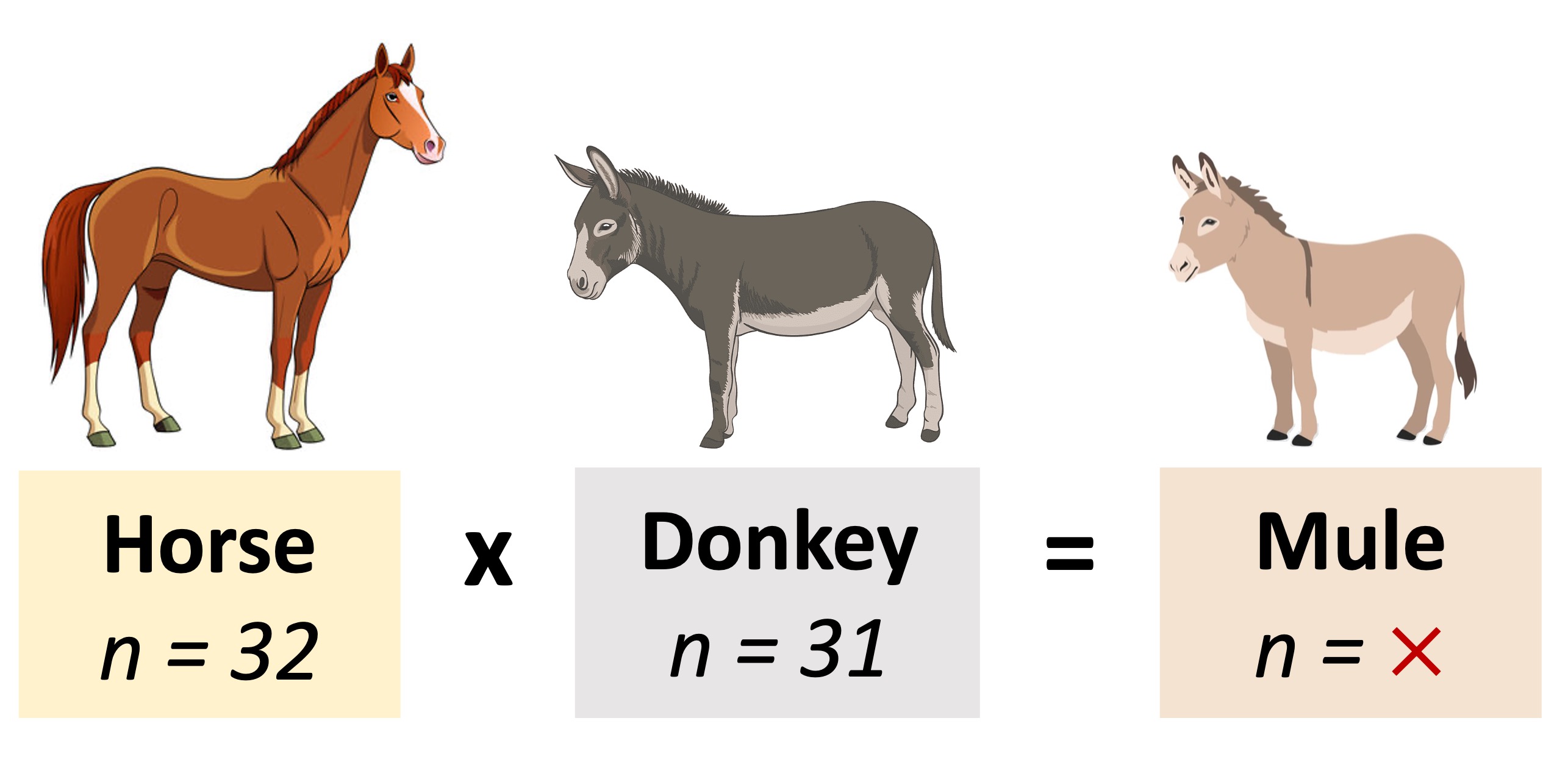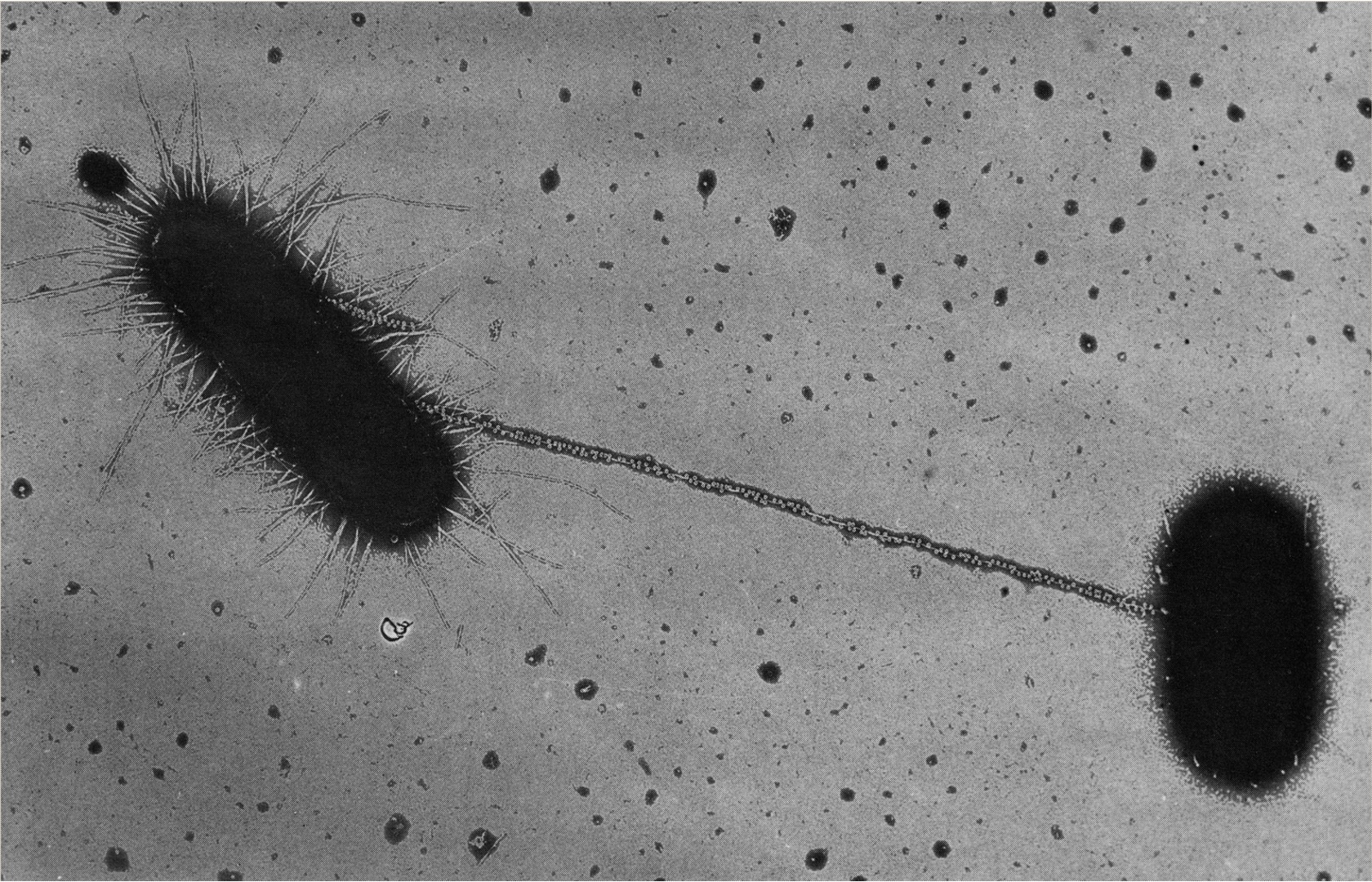

Species Caveats
According to the biological species concept, members of a species can interbreed and produce fertile, viable offspring
-
This concept classifies organisms according to their breeding capacity and not shared morphological characteristics
The biological species concepts requires members of a species to share a common chromosome number
-
Organisms with different chromosome numbers would not be able to produce compatible gametes and hence would be unable to generate offspring
-
Closely related species may be able to interbreed (hybridisation), however the hybrid offspring are typically infertile
Hybridisation


Concept Limitations
The biological species concept is based on shared reproductive capacities and cannot be easily applied to organisms that do not interbreed (e.g. bacteria)
-
Bacteria reproduce asexually (via binary fission), so the genetic compatibility of bacterial strains cannot be established
-
Bacteria can exchange plasmids (via horizontal gene transfer), so genetic information can be shared without producing any offspring
Organisms that do not conform to the reproductive standards of the biological species concept must be classified according to other criteria
-
Bacteria can be classified according to morphology (bacillus, coccus, etc.), metabolic requirements (anaerobes vs aerobes) or structures (Gram staining)
Bacterial Species

Classification by Shape

Bacterial Conjugation




